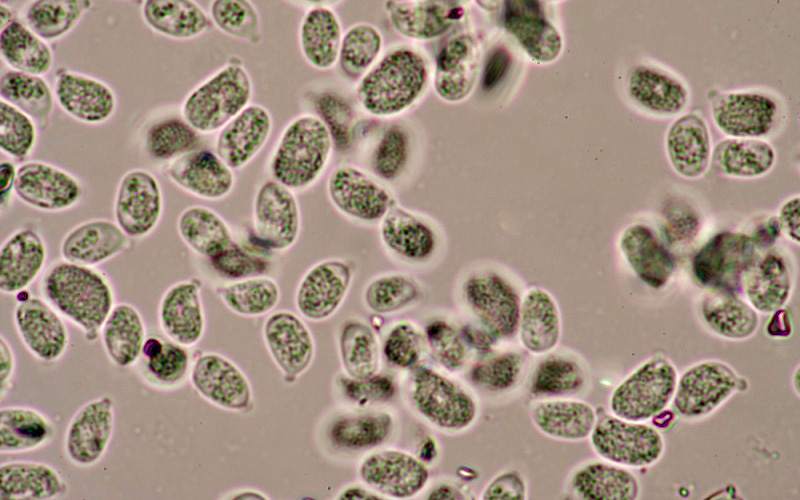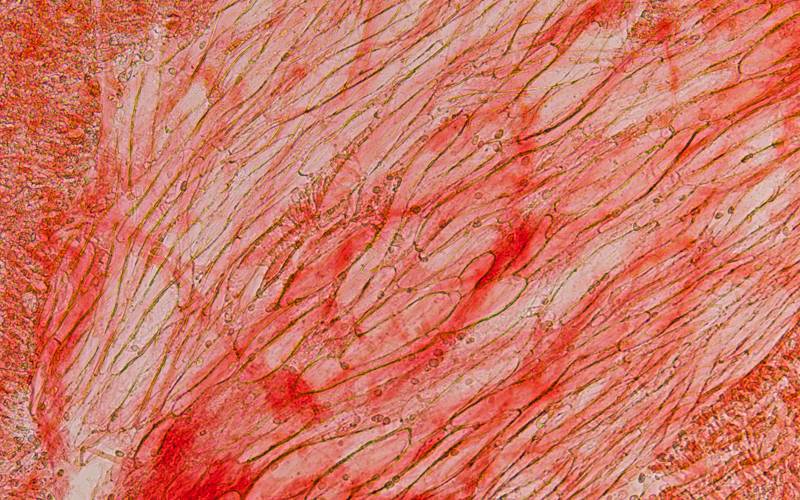Hygrocybe helobia (Arnolds) Bon - Garlic Waxcap
Phylum: Basidiomycota - Class: Agaricomycetes - Order: Agaricales - Family: Hygrophoraceae
Distribution - Taxonomic History - Etymology - Identification - Culinary Notes - Reference Sources
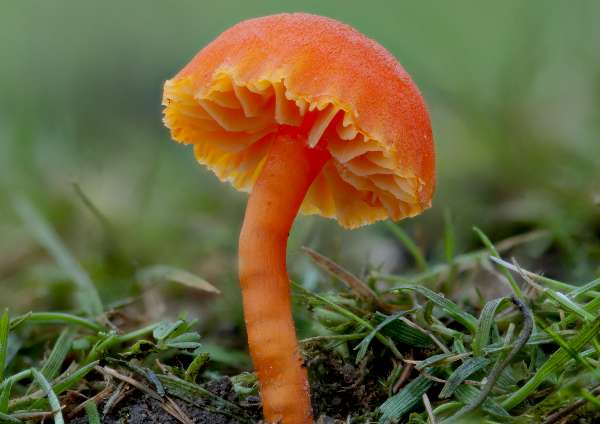
One of the smaller species of red waxcap fungi, Hygrocybe helobia is quite a rare find on cropped grassland and in woodland clearings.
Red waxcaps are notoriously difficult to separate on macroscopic characters alone, and so it is a great help when a species has one or more features shared with few or no other waxcaps. The crushed gills of Hygrocybe helobia smell like garlic. (To detect the odour it may be necessary to enclose the material in a sealed box for a while.)
Distribution
Hygrocybe helobia is an uncommon find but widely distributed across most parts of Britain and Ireland. This species is more commonly seen in Scotland than anywhere else in Britain. Hygrocybe helobia is recorded also in most mainland European countries and in parts of North America.
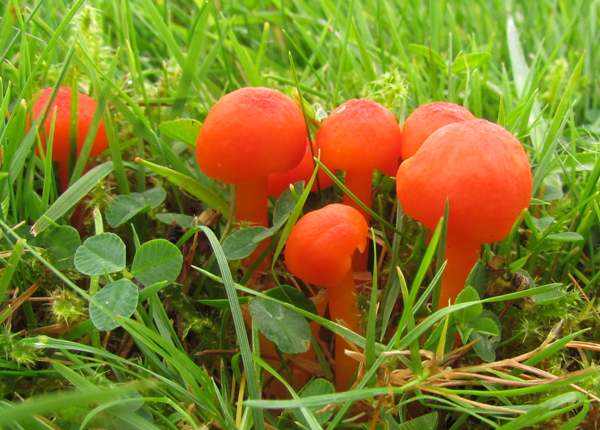
Taxonomic history
Hygrocybe helobia is a relative newcomer to the list of waxcap species; its basionym was set when, as Hygrophorus helobius, it was described by the Dutch mycologist Eef Arnolds in 1974. Earlier synonyms do exist, however. The currently accepted name Hygrocybe helobia dates from 1976, when French mycologist Marcel Bon transferred this waxcap to its present genus.
Hygrocybe helobia has just a few synonyms including Hygrophorus miniatoalbus Pat., Hygrocybe miniatoalba (Pat.) F.H. Møller, Pseudohygrocybe helobia (Arnolds) Kovalenko, and Hygrophorus helobius Arnolds.
Etymology
The genus Hygrocybe is so named because fungi in this group are always very moist. Hygrocybe means 'watery head'. The specific epithet helobia seems to have come from the Greek helos (marsh) and hence implying 'of marshy or wet muddy places'.
Identification guide
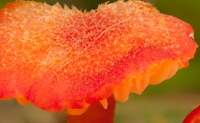 |
CapCovered with upright, pointed scales, the dry caps range from 0.8 to 2.5cm in diameter. At first convex and then flattening, the caps often develop slightly depressed centres. Initially scarlet or blood red; with age the cap surface often fades to a dull orange. |
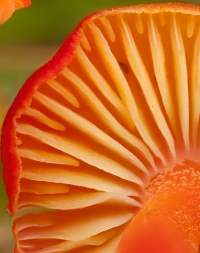 |
GillsVariable in colour between orange-red and pale yellow the gills are adnate to slightly emarginate sometimes with a decurrent tooth. StemScarlet or orange-red, the fragile dry stems are smooth and level, 2 to 3mm in diameter and 1 to 4cm long with no stem ring. |
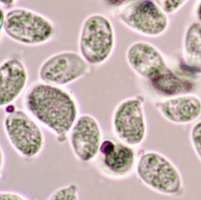 |
SporesEllipsoidal, smooth; with some drops; 8-10 x 5-6μm; hyaline; inamyloid. Spore printWhite. |
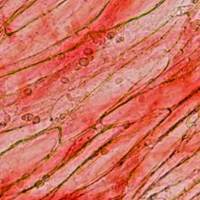 |
Gill tramaRegular. |
Odour/taste |
Not distinctive. |
Habitat & Ecological role |
Woodland clearings under alders; on closely cropped or mown damp grassland where artificial fertilisers are not spread; also sometimes found on heathland. Waxcaps have long been considered to be saprobic on the dead roots of grasses and other grassland plants, but it is now considered likely that there is some kind of mutual relationship between waxcaps and mosses. |
Season |
September to November in Britain and Ireland. |
Similar species |
Hygrocybe cantharellus has decurrent gills. Hygrocybe miniata is very similar but its crushed gills do not smell of garlic. |
Culinary Notes
Hygrocybe helobia is too small and uncommon to be worth considering as a culinary collectible.
Reference Sources
Fascinated by Fungi, 2nd Edition, Pat O'Reilly 2016, reprinted by Coch-y-bonddu Books in 2022.
Fungi of Northern Europe, Volume 1 - The Genus Hygrocybe, David Boertmann, 2010.
Dictionary of the Fungi; Paul M. Kirk, Paul F. Cannon, David W. Minter and J. A. Stalpers; CABI, 2008
Taxonomic history and synonym information on these pages is drawn from many sources but in particular from the British Mycological Society's GB Checklist of Fungi.
Acknowledgements
This page includes pictures kindly contributed by David Kelly.
Fascinated by Fungi. Back by popular demand, Pat O'Reilly's best-selling 450-page hardback book is available now. The latest second edition was republished with a sparkling new cover design in September 2022 by Coch-y-Bonddu Books. Full details and copies are available from the publisher's online bookshop...
